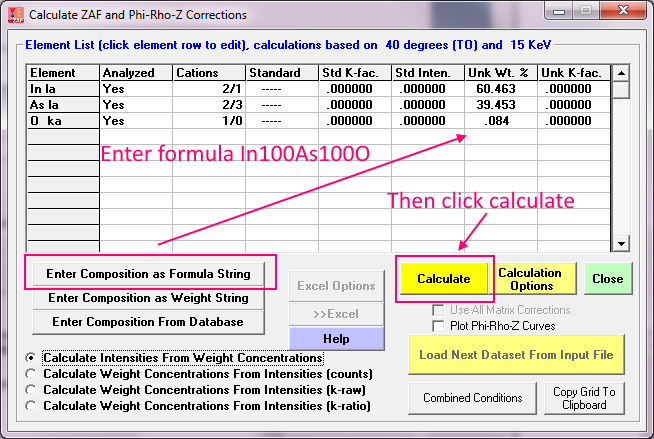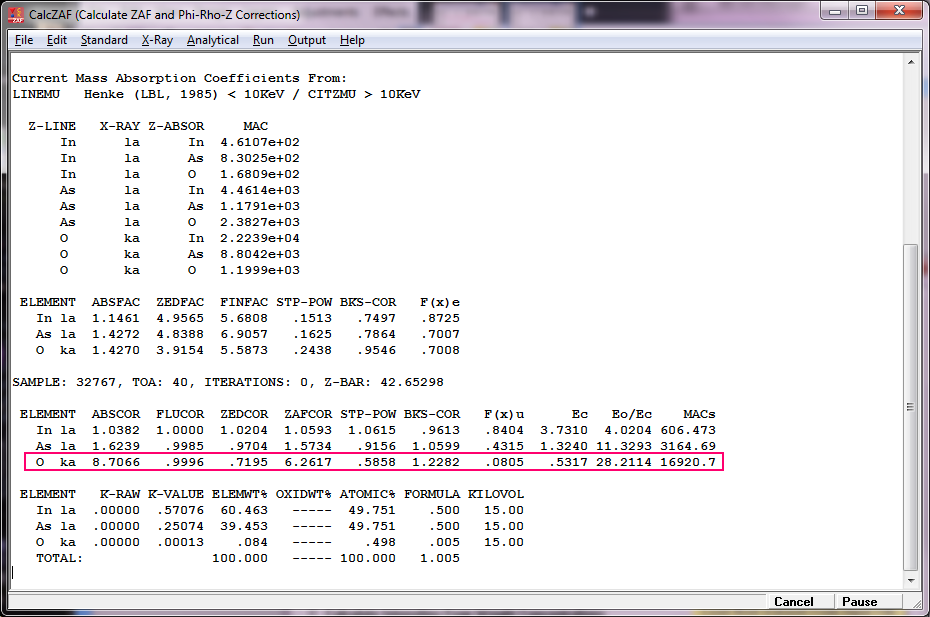Can I estimate MACs for my standard sample (contains more then 1 element) from "Table of MACs for elements" of PFE soft?
You could, by using those mass absorption coefficients with Beer's Law:
https://en.wikipedia.org/wiki/Beer%E2%80%93Lambert_lawBecause the mass absorption coefficients are already normalized to mass, you can simply sum the mass fractions of each element's MAC to obtain the average MAC (actually we should be using attenuation coefficients and molar concentrations as is done in PENEPMA!).
But you can do this easily in the CalcZAF application by simply entering the compound (by formula or weight %) with a small amount of the emitting element, and calculating the k-ratios.
Here is an example of InAs with a small amount of oxygen (100 atoms of In, 100 atoms of As and 1 atom of oxygen):

After clicking the Calculate button we obtain this output:

But again, in cases of extreme absorption, we should not only be using MAN standards that cover the range of average atomic number for our unknowns (and standards), but we may also want to consider elements that are representative of these extremely absorbing matrices (so long as they do not contain major concentrations of the emitting element in order to avoid extrapolating across absorption edges).
Also remember the rule of thumb: for major elements, the standards and matrix corrections are most important. For trace elements, the background corrections and interference corrections are most important. For minor elements, it's a little of all these concerns.
Performing background corrections for oxygen using the MAN method is especially tricky because it is difficult to obtain materials that do not contain oxygen and that are not oxidized (which is why I assume you are using the interpolated MAN method). However, you might be better off using MAN on your other elements and off-peak methods for oxygen.
Can you share with us what exactly you are trying to characterize? In other words what major/minor/trace elements are you trying to measure, and in what materials?